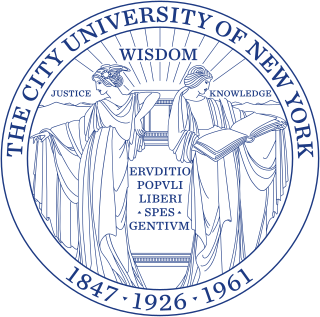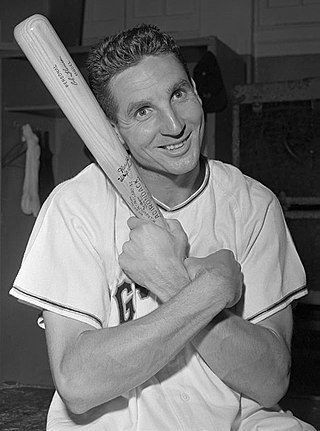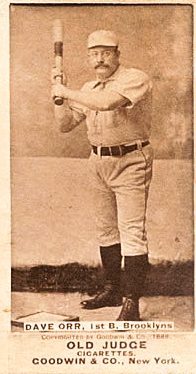James Bates Thomson (May 21, 1808-June 22, 1883) was an American mathematician, educator, and writer.
Thomson was born in Springfield, Vermont on May 21, 1808. He was the son of John and Elizabeth (Brown) Thomson. After several years' experience in teaching, he entered Yale College in 1829, but on completing his Freshman year he was obliged to be absent on account of illness, and so did not graduate until 1834.
After taking his degree he spent one year in New Haven, Connecticut as a resident graduate, and then took charge of an academy in Nantucket, Massachusetts, where he remained until 1842, when he resigned and moved to Auburn, New York. He was then entrusted by Yale President Jeremiah Day with the duty of abridging his treatise on Algebra, and for four or five years subsequently devoted himself to the organization and extension of Teachers' Institutes and similar gatherings. He moved to New York City in 1846. For the rest of his life he lived at various time in New York City and also in Brooklyn, New York, which was then a separate city. He continued to work on the completion and revision of a series of mathematical works. He received the degree of Doctor of Laws from Hamilton College in 1853, and again from the University of Tennessee in 1882. He moved to Brooklyn in 1868, and for eight years before he died suffered from rheumatism. He died in Brooklyn, June 22, 1883 at age 75.
He married, August 25, 1840, Mary Coffin, who survived him with their only child, a daughter. His great-grandson, Thomson Burtis was a prolific writer of adventure stories for boys as well as several movie scripts.
 This article incorporates public domain material from the 1884 Yale Obituary Record .
This article incorporates public domain material from the 1884 Yale Obituary Record .
|
|---|
| International | |
|---|
| National | |
|---|
| Other | |
|---|

The City University of New York is the public university system of New York City. It is the largest urban university system in the United States, comprising 25 campuses: eleven senior colleges, seven community colleges, and seven professional institutions. In 1960, John R. Everett became the first chancellor of the Municipal College System of New York City, later known as the City University of New York (CUNY). CUNY, established by New York State legislation in 1961 and signed into law by Governor Nelson Rockefeller, was an amalgamation of existing institutions and a new graduate school.

Douglas Stuart Moore was an American composer, songwriter, organist, pianist, conductor, educator, actor, and author. A composer who mainly wrote works with an American subject, his music is generally characterized by lyricism in a popular or conservative style which generally eschewed the more experimental progressive trends of musical modernism. Composer Virgil Thomson described Moore as a neoromantic composer who was influenced by American folk music. While several of his works enjoyed popularity during his lifetime, only his folk opera The Ballad of Baby Doe (1956) has remained well known into the 21st century.

Robert Brown Thomson was a Scottish-born American professional baseball player, nicknamed "the Staten Island Scot". He was an outfielder and right-handed batter for the New York Giants, Milwaukee Braves (1954–57), Chicago Cubs (1958–59), Boston Red Sox (1960), and Baltimore Orioles (1960). His pennant-winning three-run home run for the Giants in 1951 is popularly known as the "Shot Heard 'Round the World", and is one of the most famous moments in baseball history. It overshadowed his other accomplishments, including eight 20-home-run seasons and three All-Star selections. "It was the best thing that ever happened to me", he said. "It may have been the best thing that ever happened to anybody."

John Lawrence LeConte MD was an American entomologist, responsible for naming and describing approximately half of the insect taxa known in the United States during his lifetime, including some 5,000 species of beetles. He was recognized as the foremost authority on North American beetles during his career, and has been described as "the father of American beetle study".
Christopher Lehmann-Haupt was an American journalist, editor of the New York Times Book Review, critic, and novelist, based in New York City. He served as senior Daily Book Reviewer from 1969 to 1995.

Russell Sturgis was an American architect and art critic of the 19th and early 20th centuries. He was one of the founders of the Metropolitan Museum of Art in 1870.

David L. "Dave" Orr was an American first baseman in Major League Baseball from 1883 through 1890. Orr played most of his career in the American Association for the New York Metropolitans (1883–1887), Brooklyn Bridegrooms (1888) and Columbus Solons (1889). He also played for the New York Gothams in the National League for one game in 1883 and for the Brooklyn Ward's Wonders of the Players' League in 1890.
William Orville Ayres was an American physician and ichthyologist. Born in Connecticut, he studied to become a doctor at Yale University School of Medicine.

Henry Cruse Murphy was an American lawyer, politician and historian. During his political career, he served as Mayor of Brooklyn, a member of the United States House of Representatives, U.S. Minister to the Netherlands, and member of the New York State Senate.

Augustus Vincent Tack (1870–1949) was an American painter of portraits, landscapes and abstractions.

Hamilton Holt was an American educator, editor, author and politician. He was President of Rollins College 1925 to 1949.

John Augustus "Josh" Hartwell was an American college football player and coach, military officer, and physician. Hartwell attended Yale University, where he played end for Walter Camp's Bulldogs football team from 1888 to 1891. In 1891, Hartwell was named an All-American for a season in which Yale was unbeaten, untied, unscored against, and later recognized as a national champion by a number of selectors.
Pearl London (1916–2003) was an American supporter of literary arts and teacher of poetry in New York City.

Lyman Hotchkiss Atwater was an American Presbyterian philosopher.
Robert Tomes was an American physician, diplomat and writer.
Arthur Howe Bradford was a notable Congregational minister and preacher.
Aron Wright was an American physician and educator. He was the founder and president of Miami Valley College.

Ray Palmer was an American pastor and author of a number of hymns, the best known of which was "My faith looks up to Thee".
Stephen Dodd Law was an American lawyer and writer.

Guy Eastman Tripp was an American business executive and an officer in the United States Army. A longtime manager and executive for several companies, he served as Chairman of the Westinghouse Electric Corporation Board of Directors from 1912 until his death. Tripp was director of more than 20 other companies, including several Westinghouse subsidiaries.
![]() This article incorporates public domain material from the 1884 Yale Obituary Record .
This article incorporates public domain material from the 1884 Yale Obituary Record .











